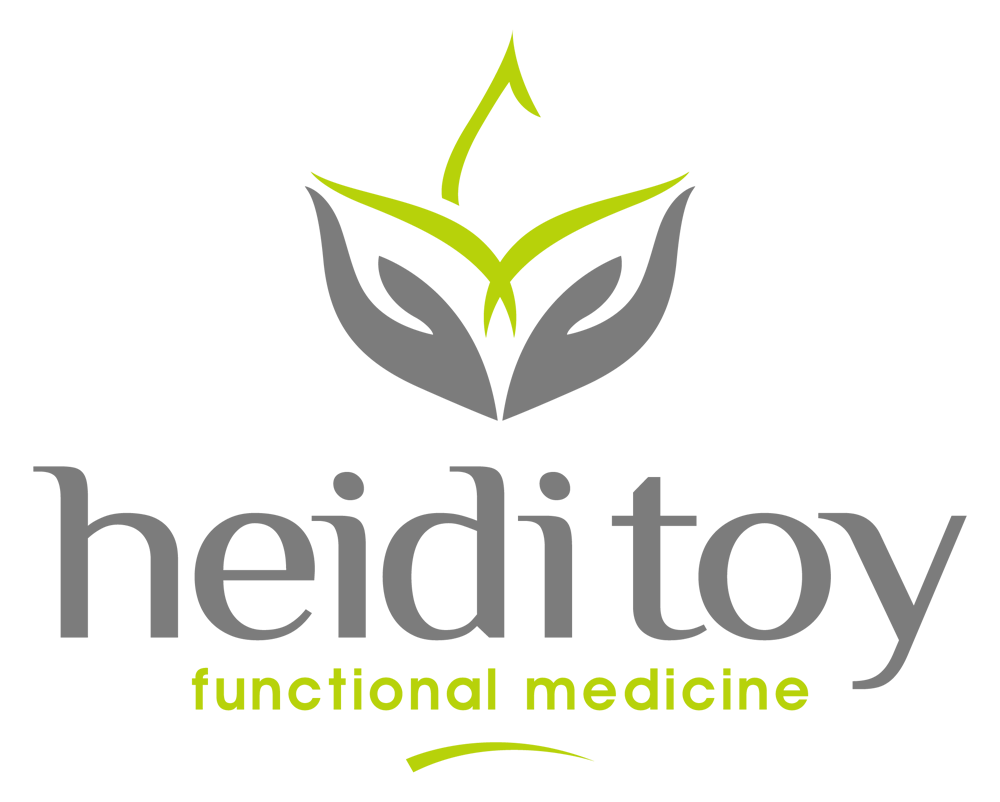Experimenting with Oils: Part 1
Fat: The Healthy Kind!
Let’s get this out there in the open right away so there is no confusion: fat is NOT bad!
We need to consume fats in order to have a healthy diet. Fats have numerous health benefits including satisfying our appetite, balancing hormone production, enhancing mineral absorption, providing a longer burning source of energy, aiding the liver with digestion, and helping with the production of natural anti-inflammatory substances. All good things!
That being said, not all fats are created equal:
- Saturated Fat – highly stable in nature, do not turn rancid easily even at higher temperatures.
- Monounsaturated Fat – relatively stable, do not turn rancid easily. They are liquid at room temperature, but semi-solid upon refrigeration.
- Polyunsaturated Fat – unstable even at room temperature, easily damaged by temperature changes and moisture and oxygen exposure, refrigeration required, turn rancid quickly and easily.
In other words:
Saturated Fats = good
Monounsaturated Fats = decent
Polyunsaturated Fats = VERY BAD! Run and hide from these!
All foods have a combination of fats, but when you check the label, the fat with the highest weight will (obviously) be the all-consuming fat in this product. For example, if your food has 1 gram of saturated fat, 2 grams of monounsaturated fats, and 15 grams of polyunsaturated fats--VERY BAD! Run and hide!
Speaking of reading labels, another good thing to be aware of is the processing of oils. Any product with the words refined, hydrogenated, partially hydrogenated or cold-processed
are BAD. These have been chemically processed in a pretty disgusting way--either with a petroleum-based solvent or with tiny bits of metal (such as in the hydrogenation process). Do either of these sound like things you want to be putting in your body? I don’t think so. The body cannot process any of these kinds of fake fats and consuming then can lead to serious health concerns such as diabetes, birth defects, cancer, heart disease, poor bone health and sexual dysfunction.
GOOD words to find on product labels include: organic, first-cold pressed or cold-pressed, expeller-pressed, unrefined, and extra virgin.
The table below is a quick reference to help you decide what to put in your grocery cart and what to put back on the shelf:
| TOTALLY SAFE | SAFE-ISH | UNSAFE | NEVER USE |
|---|---|---|---|
| Lard | Olive Oil | Vegetable/Soybean Oil | Canola Oil |
| Ghee | Peanut Oil | Corn Oil | |
| Beef and Lamb | Avocado Oil | Flax Oil | |
| Chicken, Duck, Goose | Macadamia Nut Oil | Hemp Oil | |
| Coconut Oil - organic & virgin | Sesame Oil | Pine Nut Oil | |
| Red Palm Oil - organic & virgin | Pumpkin Oil | ||
| Palm Kernel Oil | Safflower Oil | ||
| Sunflower Oil | |||
| Grapeseed Oil |
A word about the two most commonly used oils (vegetable and canola): both are EXTREMELY processed and genetically modified. Vegetable oil can be consumed in small doses if you make sure to get it from a reputable source and it is not refined or processed (good luck finding that!). Canola oil is extracted from a hybridized rapeseed, which is a genetically modified crop to begin with, so before it’s even extracted it’s already been scientifically created. This is not a natural product and does NOT belong in the body. PUT IT BACK ON THE SHELF.
Have you had enough of me yelling at you? Well, then let’s talk about butter. You might groan and say, “No, not butter, too!” But I’m here to tell you that butter is actually okay! Search for raw, unprocessed butter made from a grass-fed cow (I know, it sounds like it’s going to be hard to find, but honestly, butter is worth it, right?). Butter has all these things going for it:
- Protects from arthritis, cataracts, fungal infections, cancer, and hardening of the arteries
- Aids with weight management and muscle growth
- Helps assimilate minerals into the bloodstream
- Enhances brain function and increases cell membrane integrity
- Assists with anti-inflammatory responses systems in our bodies
Butter truly does make everything better--in more ways than one. Here’s the super good news: you SHOULD eat it every day! But do keep in mind that you should still consume it in appropriate amounts. Please do not go out and eat a stick of butter a day while saying, “Heidi says it’s okay!” To this I would shake my head and explain that you’ve missed the point of this blog.
Cooking with healthy fats is just the beginning to eating better and feeling better. If you struggle with autoimmune disease, fatigue, hormone imbalance, infertility, weight gain, depression or gastrointestinal health, let’s talk about how I can help you heal yourself. I offer a 20-minute Health Discovery Session for $49 to get you on the right path to wellness. Contact me today.
Information for this blog based on an article by Caroline Barringer, “Fats: Safer Choices for Your Frying Pan and Your Health.”
Don't Miss Out On More!

Heidi Toy FNTP
I help people all over the world heal by identifying and treating the root cause of their body imbalances. Through diet and nutrition, I guide them towards wholeness and balanced lives.
Heidi Toy Functional Medicine Blog

For many of us, our experience with food comes with some sort of baggage. Maybe you eat to cope with stress, anxiety or depression. Maybe you’ve grown up with value-words placed on food such as “junk” and “healthy,” and told you couldn’t eat the “good stuff” (brownies and ice cream) until you finished the “yucky stuff” (broccoli and lettuce). Or, even more serious, maybe you or a loved one has struggled or is struggling with an eating disorder. Food is amazing and life-giving. It can be used as a means to celebrate, socialize, or simply just provide fuel for the body. Our relationship with food shouldn’t be a difficult one, it should be an enjoyable one. A way to get to that healthy place in your relationship is to practice mindful eating. Mindfulness is a Buddhist concept of mediation that can help you recognize emotions and physical sensations present. Through mindful eating, you can learn to truly pay attention to your experiences, cravings and physical cues. The basics of mindful eating are: Eat slowly, without distraction. If you are eating with others, take a least five minutes at the start of the meal to enjoy the food on your plate before engaging in discussion. Pay attention to your body--are you still hungry, or are you getting full? Learn to distinguish between cravings and true hunger. Use all your senses when you sit down to a meal. Make an effort to notice how the food looks, smells, tastes, feels in your mouth, and sounds when you chew. Appreciate your food, who has prepared it (even if it’s you--what an accomplishment!), and where it comes from. Being mindful of your experience will help you slow down while eating. This can prevent overindulgence by making the act of eating intentional instead of automatic. It will also help you become aware of triggers that make you want to eat (are you truly hungry at 9pm every night when you sit down to watch that Netflix show, or do you just pour yourself a bowl of Chex Mix because that’s what you always do?). Knowing your triggers can give you time to process what’s truly going on and the ability to react properly.

Here are the essential functional medicine steps for Fifth Disease! If your child comes home with bright red cheeks that look like they’ve been “slapped,” chances are they may have fifth disease, also known as erythema infectiosum. This mild viral illness, caused by parvovirus B19, is common in kids and often spreads t

Successfully healing Adrenal Fatigue requires a holistic approach focussed on fixing the root cause of your problems and supporting your body through the healing process. This means we are going beyond just temporary symptom relief. We want you to return to vibrant health so you can get back to the active and healthy lifestyle that Adrenal Fatigue is holding you back from. (Adrenal Fatigue is more accurately known as HPA-D. Check out my blog HPA-D vs Adrenal Fatigue to learn more.)Again, we would be completing further testing to get to the root cause of your issues, but this protocol is a great starting point for healing. We focus on five essential areas for fast and long-term healing.

I want it! Sooooooo bad. But I want to lose weight, too. It’s not on my list of healthy, squeaky clean healing foods, but what will one little bite hurt? I can start again fresh and clean tomorrow. When brownies call your name and you are trying to break up with them, it is difficult to avoid the urge to want to indulge. But you know if you give in that you will berate yourself with guilt for the next 24-48 hours and the tsunami of eating everything off-plan will take over your life. One bite will start an avalanche... But you just can't stop thinking about the pan of brownies you made for the kids.

Did you know most people didn’t have refrigerators in their homes until well into the 1900’s? It wasn’t even invented for large scale commercial use until the mid 1800’s [1]. So how did people keep their milk cold and make their food last longer? Fermentation. It sounds like a gross concept, because we often associate fermentation with a bad odor, but foods like cheese, yogurt, sauerkraut and pickles are all fermented foods. And those aren’t gross, are they? Well, some might disagree with me about sauerkraut, but that’s beside the point. Fermented foods are digestive aids. Microscopic living organisms in fermented foods help extend the food’s shelf life, enhance flavor, and help the body absorb minerals. These organisms pre-digest the food, getting rid of harmful components, and create more vitamins and enzymes than the food began with. Enzyme-rich foods have many benefits including [2]: Increase digestibility of food we eat Boost immune system Increase alkalinity; neutralizing pH levels Provide a healthy balance of friendly flora in the gut (Learn more about your microbiome in my other blog posts ) Tone the colon and help with elimination Control cravings for unhealthier foods Eliminate toxins and undigested wastes in the body In the “old days,” people use to ferment all kinds of foods through pickling, canning, pasteurization and added salt. Nowadays, however, large scale fermentation has lost many of its nutritious benefits due to the need for speed to get the product on the shelf as fast as possible and as cheap as possible. The only true fermented foods you will find are sauerkraut, kombucha, yogurt and kefir, beans, wine and beer, some meats (such as salami and pastrami), legumes and nuts (such as tofu, soy sauce and miso), sourdough bread, and various kinds of vegetables [3]. Fun facts about sauerkraut: The Germans “stole” it from the Chinese! Sauerkraut (probably not labeled as such for the Chinese, but the same recipe) was one of the main foods for those who built the Great Wall of China. Genghis Khan brought it to Eastern Europe during an invasion. It also contains high levels of vitamin C, and sailors often took it on long journeys to prevent scurvy.

How can we best keep blood sugar stable? Do what our body is designed to do – use fat for energy. Our species did not survive the Ice Age because of vanilla coffee lattes and cheesecake. Throughout most of our history, we ate a diet that was likely 50-70 percent fat. Look at the old family photo albums, specifically pictures of people in the first half of the 1900s, before we had so many processed foods. You won’t see many fat people--in fact, most look darn skinny. If they lived on the farm, they ate lots of eggs, meat, milk, and vegetables out of their own backyards. “Diet foods” were non-existent. Heart disease was almost non-existent. Our metabolism is designed to work much better with fats better than with sugar. Fats provide the slow and steady fuel our body likes to use for energy. Think of fats as a slow-burning log on the fire. One log (i.e. one meal containing fats) lasts for hours. Starchy carbs, on the flip side, are like kindling. You constantly have to throw more twigs (chips, pasta, bagels) to keep the fire burning. The first step is to know your sugars by reading the labels, and then avoid said sugars as much as possible.








































































































